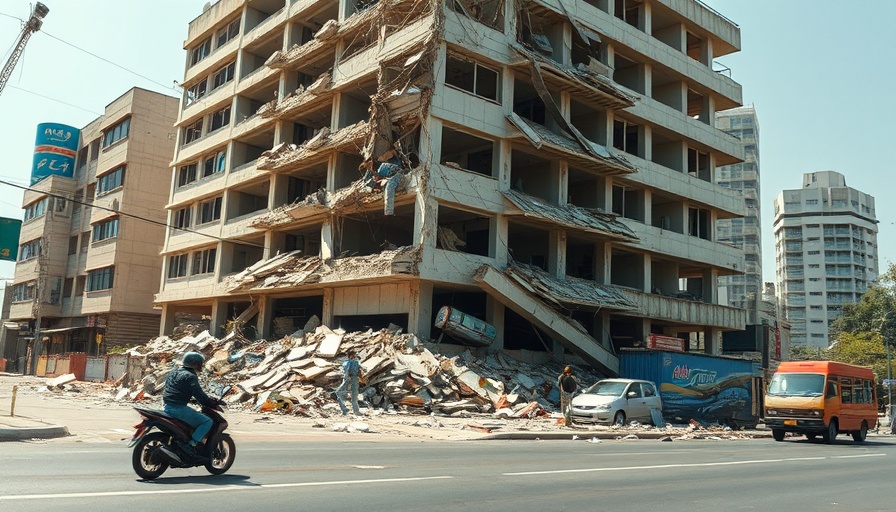
The Aftermath of a Devastating Earthquake
A massive 7.7 magnitude earthquake struck central Myanmar, tragically claiming at least 144 lives and injuring over 700 more, with those numbers likely to rise as rescue efforts progress. The United States Geological Survey (USGS) reported that the epicenter was located just northwest of Sagaing, causing tremors felt as far away as Thailand and southwest China. This seismic event has profoundly impacted local communities, particularly in Myanmar, where a dire humanitarian crisis has already been underway due to ongoing conflict.
Challenges in Rescue Efforts
In a heartbreaking development, approximately 100 construction workers are reported missing after a building collapsed in Bangkok, Thailand, highlighting the earthquake's widespread repercussions. Local authorities confirmed that at least seven casualties have been reported at the collapse site. In Myanmar, rescue operations are faced with significant hurdles—rescue workers are struggling without the necessary heavy machinery, often relying on manual digging to rescue survivors.
A Call for International Assistance
In a rare move, Myanmar's military government has called for international aid, signaling the gravity of the disaster. However, the ongoing conflict and the junta's restrictive control over communication channels complicate the situation further; accurate information from rebel-held areas is scarce, hampering relief efforts.
Historical Context and Ongoing Humanitarian Crisis
Myanmar, previously known as Burma, has a tumultuous history since gaining independence in 1948. A military coup in 2021 led to widespread unrest, with the junta suppressing dissent and enacting harsh penalties on activists. Amidst this tumult, millions have already been displaced due to ongoing violence, and the devastation caused by the earthquake is compounding an already critical humanitarian situation.
This disaster serves as a sobering reminder of the vulnerabilities within fragile states, where natural disasters can exacerbate ongoing crises. Legal and humanitarian professionals are now navigating complex scenarios as they work to assist in recovery efforts.
The majority of displaced individuals now find themselves trapped in a web of ongoing conflict and an administrative environment that limits their access to essential services.
Conclusion: The Importance of Awareness and Support
As this story continues to unfold, it is essential for global audiences, especially those in advocacy roles, to stay informed about the situation in Myanmar and Thailand. Understanding the implications of such disasters within the region is crucial for supporting affected communities. We encourage everyone to monitor reliable sources for updates and to consider how they can engage in supporting humanitarian efforts as recovery initiatives begin.
 Add Row
Add Row  Add Element
Add Element 



Write A Comment